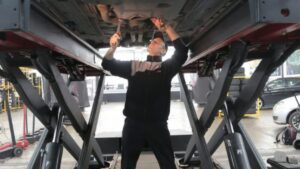Topic
Exploring The Concept of Immortality in Art

Defining Immortality in the Artistic Context
In the realm of art, immortality refers to the lasting influence and presence of creative works beyond their creators’ lifetimes. Unlike physical immortality, which pertains to living forever, artistic immortality is about the enduring relevance and impact of art. The Concept of Immortality in Art is seen through the way art continues to inspire, provoke, and resonate with audiences across different eras.
Historical Perspectives on Artistic Immortality
Historically, many artworks have achieved a form of immortality by becoming cultural icons. Think of Michelangelo’s “David” or Van Gogh’s “Starry Night.” These works transcend their time, becoming symbols of artistic brilliance that are studied and admired centuries after their creation.
Art and Cultural Legacy
Famous Artworks That Have Lasted Through Time
Certain artworks have managed to remain relevant due to their exceptional quality, innovative techniques, or cultural significance. The enduring popularity of the Mona Lisa, for instance, is a testament to its timeless appeal and the mystique that surrounds it.
The Role of Museums and Galleries in Preserving Art
Museums and galleries play a crucial role in the preservation of art. They safeguard these cultural treasures, ensuring that future generations can experience and learn from them. Through careful conservation practices and exhibitions, these institutions help maintain the legacy of countless artworks.
The Power of Art to Influence Societies
Art as a Tool for Social Change
Art has historically been a powerful tool for social and political change. From Picasso’s “Guernica,” which captures the horrors of war, to the powerful murals of Diego Rivera, art has the ability to reflect, critique, and influence societal norms and values.
Case Studies: Art Movements that Shaped History
Art movements like the Renaissance, Impressionism, and Abstract Expressionism have profoundly impacted cultural and societal development. These movements not only changed the course of art history but also influenced social attitudes and cultural trends.
Philosophical Views on Art and Eternity
Plato’s and Aristotle’s Perspectives
Philosophers like Plato and Aristotle have contributed to the discussion on art and immortality. Plato saw art as a reflection of the ideal Forms, suggesting that art has an eternal quality because it mirrors the unchanging truths of the world. Aristotle, on the other hand, viewed art as a means to achieve catharsis and engage with the timeless aspects of human experience.
Modern Philosophical Interpretations
Modern philosophers explore art’s immortality through various lenses, including existentialism and postmodernism. These perspectives examine how art transcends temporal constraints and reflects deeper human truths and emotions.
Art and Personal Immortality
The Artist’s Legacy
Artists themselves can achieve a form of immortality through their work. By creating art that resonates across generations, artists leave behind a legacy that continues to influence and inspire long after their deaths.
How Art Affects Personal Identity
Art also plays a role in shaping personal identity. For both the creator and the audience, art can be a reflection of self, identity, and personal experiences. This connection adds to its enduring impact and personal significance.
The Digital Age and Art’s Immortality
The Impact of Digital Media
Digital media has transformed the way we create, share, and preserve art. From digital archives to online galleries, technology offers new ways to experience and engage with art, potentially increasing its reach and longevity.
Challenges and Opportunities in the Digital Era
While digital media presents opportunities for wider access, it also poses challenges such as digital preservation and copyright issues. Balancing accessibility with protection is crucial in maintaining art’s integrity and legacy in the digital age.
The Future of Art and Immortality
Emerging Trends and Technologies
As technology continues to evolve, so too does the field of art. Emerging trends like virtual reality, augmented reality, and artificial intelligence are reshaping how we create and experience art, offering new possibilities for artistic expression and immortality.
The Role of Artificial Intelligence in Art
Artificial intelligence is becoming an increasingly important tool in the art world. AI can generate new artworks, analyze existing ones, and even predict future trends. This integration of technology into art presents exciting opportunities and raises new questions about the nature of creativity and immortality.
Conclusion: The Concept of Immortality in Art
Art’s ability to achieve a form of immortality lies in its power to resonate across time and space. Through its cultural impact, personal significance, and evolving presence in the digital age, The Concept of Immortality in Art continues to captivate and inspire. By exploring the intersections of art and immortality, we gain a deeper appreciation of the lasting power of creative expression.
FAQs
- How can art achieve immortality?
Art achieves immortality through its ability to influence, inspire, and resonate across generations, becoming a timeless symbol of human creativity and expression.
- What are some famous artworks known for their enduring impact?
Famous artworks such as the Mona Lisa, Michelangelo’s David, and Van Gogh’s Starry Night are renowned for their lasting influence and continued relevance.
- How does art influence social and cultural change?
Art influences social and cultural change by reflecting societal issues, challenging norms, and inspiring movements, thereby shaping public attitudes and values.
- What are the philosophical views on art and immortality?
Philosophical views on art and immortality range from Plato’s idea of art as a reflection of eternal Forms to modern interpretations of art as a means of engaging with timeless human experiences.
- How is the digital age changing the concept of artistic immortality?
The digital age enhances artistic immortality through broader access and preservation opportunities but also introduces challenges like digital preservation and copyright concerns.
Topic
6 Common Mistakes to Avoid When Setting Up a Gift Registry

When planning a special event, creating a gift registry can make the gift-giving process much easier for the guests. Many people make mistakes that can complicate their experience and create frustration for both themselves and their guests. Learning more about these common pitfalls can help you establish a successful registry. Here are six mistakes to sidestep when setting up your gift registry. Look no further!

Forgetting About the Online Gift Registry Options
There are many websites and online alternatives that offer a wealth of choices for gift registries that are easy to use for everyone. When setting up your registry for a wedding, remember the convenience that online gift registries like https://www.easyregistry.com.au/ can provide in this scenario. Traditional registry options have their charm, but they may limit accessibility for guests living out of town. An online registry allows for greater flexibility, letting guests shop from the comfort of their homes.
Many online registries offer the ability to manage your list easily, track gifts, and even integrate cash gifts. This modern twist brings convenience to both the host and the guests involved. It’s worth considering how an online gift registry might cater to your needs and those of your guests, who can enjoy a more convenient gift-giving experience.
Not Doing Sufficient Research
Creating your gift registry should not be a hasty decision. Take time to research various registry options available, as they each come with their own features and benefits. Check out the costs and the delivery options before selecting the right one for you. Many registries offer different styles, from traditional items to experiences or cash contributions.
Assess what best reflects your personal preferences and lifestyle. Once you compile a list that matches your needs, you’ll be more successful in guiding guests in their choices. When in doubt, look for reviewers and testimonials that can provide more insight into other people’s experiences.
Choosing Limited or Inappropriate Items
A mistake people make is selecting too few items or choosing items that may not be appropriate for guests. When curating your registry, look into a variety of price points. Guests like to have options since your registry will cater to different budgets. If your selections consist solely of high-ticket items, it may discourage loved ones from participating. The best would be to include affordable options, essentials, and even luxury items for guests who want to spend more.
Personalize your choices that resonate with your interests, hobbies, and lifestyle. This way, guests are more likely to feel motivated to choose something meaningful to you. Each guest will find something that fits their budget and supports your vision.
Not Updating the Registry Regularly
One of the primary considerations when managing a gift registry is to keep it updated. Registries change as guests begin purchasing items, meaning you may need to adjust your list to reflect what’s still available. Failing to do so can lead to disappointment for both you and your guests, as they may think they are buying something that is no longer an option.
Regularly log into your registry and review your selections. You can even add some new items to your list to provide fresh selections that can intrigue guests. This ongoing commitment will keep your registry up to date and keep gifts flowing.
Overlooking Personalization and Customization Options
Personalizing your gift registry can add a special touch and improve connections with your guests. Many registries allow for custom messages or photos, making each selection more meaningful. It may be a great idea for weddings, where personalized gifts resonate more deeply than generic ones. Include particular themes, colors, or even styles that reflect your personality to make your registry stand out.
Personalizing your choices brings an element of storytelling into the gift-giving process, inviting guests to be part of your journey. When they connect with the items and their significance, it creates a deeper emotional link and potentially makes their gift-giving experience more rewarding.
Failing to Communicate Your Registry Details
Many registry hosts fail to communicate their registry details effectively. Sending out an invitation or announcement will let your guests know your registry is there. Include information on where to find the registry, what type of items are included, and any options for customization.
Use social media or email to spread the word about your registry. Your guests want to give meaningful gifts and will appreciate knowing how to help you achieve your vision. Clear communication minimizes confusion, promotes wider participation, and allows guests to feel more involved in your celebration. Establishing a gift registry can be a delightful experience if approached with your guests in mind.

Now that you know how to avoid these common mistakes, you can create a registry that meets your needs and adds joy to your celebration. Take the time to reflect on your preferences, personalize your choices, and effectively communicate with your guests to achieve a smooth gift-giving experience.
Topic
Maximize Shop Productivity With These Heavy Lifting Solutions

In any industrial or commercial setting, productivity depends on how efficiently materials and equipment can be moved, positioned, or secured. Whether you’re managing a small repair shop or a large-scale production facility, having the right lifting equipment in place reduces downtime, minimizes injury risk, and keeps workflows consistent. Lifting by hand is both inefficient and dangerous, especially when dealing with repetitive tasks or bulky machinery.
Integrating smart lifting solutions is one of the most reliable ways to create a safer, faster, and more capable workspace.
Understanding the Value of the Right Equipment
Heavy lifting equipment is no longer a luxury for shops with high workloads, but a necessity. Without it, teams face strain-related injuries and slower task completion. Even a simple task, such as relocating a heavy engine part or maneuvering an industrial mold, becomes time-consuming when done manually.
The proper lifting tools are designed to reduce physical exertion while increasing the precision and control of movement. They help operators work smarter, not harder. This improvement affects more than just the person doing the lifting; it changes the pace and flow of the entire operation.
Prioritizing Safety With Every Lift
Investing in lifting solutions is as much about safety as it is about productivity. Improper lifting is one of the most common causes of workplace injury, especially in jobs that involve repetitive movements or heavy equipment. Employers who implement professional lifting systems reduce the physical toll on their teams and promote a culture of safe practices.
Informed buyers often turn to experienced suppliers for advice and solutions tailored to their space. Companies like Heavylift Direct and similar ones provide a wide range of equipment suited to shops of different sizes and industries. Their expertise helps businesses identify the most effective lifting strategies for their needs. Making the right purchase starts with understanding your workflow and identifying areas where equipment can fill gaps or prevent risk.
Overhead Cranes for Large-Scale Operations
In larger shops and warehouses, overhead cranes are game changers. They allow operators to lift and transport heavy loads across wide areas without interfering with floor traffic. By installing rails or freestanding cranes, businesses gain full control over their work area while maintaining valuable floor space for other operations.
These systems also support heavier weight capacities compared to forklifts or manual options. Whether lifting raw materials, machinery, or finished products, overhead cranes provide reliable movement that integrates seamlessly into high-demand environments.
Gantry Cranes for Flexible Lifting
For businesses that need portable lifting options or temporary setups, gantry cranes deliver adaptability. These cranes consist of a frame on wheels or tracks that supports a hoist. Since they’re not fixed to a structure, gantry cranes can be moved around the shop floor or even outdoors as needed.
This flexibility allows teams to perform heavy lifts in multiple zones without requiring multiple cranes. Smaller models are suitable for lifting engines or HVAC units, while larger models can handle containers or pallets. The added mobility enhances shop efficiency, especially in dynamic or project-based environments.
Hydraulic Lifts for Precision Control
Hydraulic lifts offer excellent control for lifting equipment that needs careful handling. Whether adjusting the height of a workstation or raising machinery for maintenance, hydraulic systems allow for incremental movement. Their smooth operation reduces the risk of abrupt shifts or tipping, which protects both equipment and staff.
These solutions are often used in assembly lines, mechanical service bays, and laboratories. They’re particularly useful when a consistent lift height is needed across multiple stations, improving standardization and reducing human error.
Jib Cranes for Targeted Areas
When lifting is confined to a particular workstation or area, jib cranes are one of the most efficient choices. These cranes feature a rotating arm that extends from a fixed point—either mounted to a wall or floor. They allow for targeted lifting within a limited radius, perfect for welding stations, assembly lines, or parts storage.
The compact design of jib cranes makes them ideal for shops with tight layouts. They keep lifting localized without interrupting other workflows or requiring excess floor space.
Forklifts for Versatile Material Handling
Forklifts remain one of the most popular heavy lifting tools for good reason. They’re highly mobile, intuitive to operate, and capable of handling everything from pallet loads to bulky equipment. For shops that frequently receive or ship goods, forklifts streamline logistics by reducing load/unload times and improving material flow.
Even within the shop itself, forklifts make it easier to move supplies from one area to another. When paired with training and maintenance, they become one of the most reliable assets in any industrial environment.
Elevating Efficiency With Hoists
Hoists are often used in tandem with cranes and lifting frames, particularly when vertical lifting is needed. Chain hoists, electric hoists, and pneumatic hoists provide a range of force and control depending on the task. Their mechanical advantage allows a single operator to move loads that would otherwise require multiple people.
Hoists shine in confined spaces and precision tasks where controlled lifting is critical. When overhead height is limited, low-profile hoists still provide a lifting solution that fits within spatial constraints.
Maintenance Matters
No lifting system works well if it’s neglected. Routine maintenance of cranes, lifts, hoists, and forklifts is critical to keeping operations safe and uninterrupted. Worn cables, unbalanced loads, or delayed inspections all create unnecessary hazards. A well-documented maintenance schedule, along with employee training, ensures long-term reliability.
Shops that take lifting equipment seriously often establish dedicated roles or teams for equipment upkeep. Whether it’s weekly checks or annual certifications, small steps taken consistently protect both assets and personnel.

Heavy lifting solutions are more than tools; they’re investments in efficiency, safety, and future growth. The right combination of cranes, hoists, lifts, and forklifts reduces strain, increases speed, and allows shops to function at their highest level. Prioritizing smart lifting strategies today lays the foundation for smoother operations and a more productive tomorrow.
Topic
The Power of a Well-Chosen Bracelet in Your Outfit

Accessories are the secret weapons of fashion. Often small, but with the ability to transform an entire look. Among these, bracelets stand out as one of the most versatile and expressive pieces you can add to your ensemble. A well-chosen bracelet is a statement, a mood setter, and a personal signature all at once. Whether you’re dressing up for a formal event or simply aiming to add a touch of flair to a casual outfit, the right bracelet can elevate your style with subtlety or boldness, depending on your choice. In this blog post, we’ll explore how a bracelet can powerfully influence your outfit, reflecting your personality, enhancing your look, and making your style uniquely yours.

Express Your Personality Through Style
A bracelet can be a window into your personality. Whether you prefer delicate chains, chunky cuffs, or beaded strands, each style tells a story about who you are. For example, someone who opts for a sleek silver or gold bracelet may be conveying elegance and sophistication, while a colorful, handmade beaded bracelet might reflect creativity and a free spirit. This personal expression through bracelets allows you to showcase parts of your identity without saying a word. Mixing and matching different styles can further tell a complex story about your mood or preferences on any given day. A well-chosen bracelet acts as a wearable conversation starter and an extension of your narrative.
Enhance Seasonal and Occasion Styles
The bracelet you choose can reflect the season or occasion, subtly adapting your outfit to the moment. Light, airy bracelets with shells or pastel beads are perfect for summer, adding a beachy, relaxed vibe to your look. In winter, men’s leather bracelets, or those with dark metals, or adorned with gemstones, can lend warmth and luxury. Occasion-specific bracelets, like sparkling diamond cuffs for formal events or colorful woven pieces for festivals, help you blend with or stand out in the right way. By thoughtfully selecting bracelets that resonate with the time of year or event, you ensure your outfit feels intentional and well-considered, demonstrating attention to detail that makes a lasting impression.
Complement Your Outfit’s Color Palette
One of the most practical yet overlooked aspects of choosing a bracelet is how well it complements the colors of your outfit. A bracelet doesn’t have to exactly match your clothing, but thoughtful coordination can tie an entire look together. For example, a warm-toned bracelet with gold or bronze accents pairs beautifully with autumnal colors like browns, oranges, and deep greens. Silver or cool-toned bracelets harmonize well with blues, greys, and purples. Even neutral colors such as black, white, or beige benefit from the subtle shine and texture of a metallic or leather bracelet. Paying attention to color harmony helps ensure your bracelet enhances rather than clashes with your ensemble, creating a cohesive and polished appearance.
Balance Simplicity and Statement Pieces
A bracelet’s power in your outfit often lies in the balance between simplicity and statement. For a minimalist look, a thin, understated bracelet can add a touch of class without overwhelming your outfit. This approach works particularly well in professional or formal settings where subtlety is key. Statement bracelets can become the focal point of your look. These pieces work wonders when paired with simpler clothing, upgrading your outfit and drawing attention to your wrist. Knowing when to keep it simple or go bold with your bracelet choice helps you control the vibe and impact of your style.
Reflect Cultural or Sentimental Significance
Beyond aesthetics, bracelets often carry cultural or sentimental value, adding depth to your outfit beyond just fashion. Many people wear bracelets gifted by loved ones, heirlooms, or pieces symbolizing significant life events or beliefs. This imbues your look with a unique personal significance that can make your style feel more authentic and meaningful. Bracelets with cultural or spiritual motifs connect you to traditions and communities, enhancing your outfit with layers of identity. When you choose a bracelet with significance, you’re honoring your story and values, making your outfit truly yours.
Layering Bracelets for Texture and Dimension
Layering multiple bracelets is a popular trend that adds texture, depth, and personality to your look. Combining different materials, like leather, metal, fabric, or beads, creates a rich, tactile experience on your wrist. Layering allows for creative expression, mixing casual and formal elements or blending colors and shapes in eye-catching ways. For example, a thin gold chain layered with a beaded friendship bracelet and a leather strap can effortlessly merge sophistication with boho-chic. The key to successful layering is balance: varying the thickness, style, and color while maintaining harmony so the bracelets complement rather than compete. This technique transforms your outfit into a curated work of art, showcasing your fashion savvy.

A well-chosen bracelet holds incredible power in shaping your outfit and your style. From expressing your personality to complementing colors, balancing simplicity and statement, reflecting deeper meanings, layering for dimension, and enhancing seasonal or occasion-specific looks, bracelets are a small yet mighty accessory. They offer endless possibilities for creativity and self-expression while effortlessly upgrading your appearance. Next time you prepare your outfit, consider the impact a single bracelet can make. With the right bracelet, you wear confidence, identity, and style that stand out.

 Cartoon1 year ago
Cartoon1 year agoUnlocking the Potential of Nekopoi.care: A Comprehensive Guide

 Game1 year ago
Game1 year agoExploring Aopickleballthietke.com: Your Ultimate Pickleball Destination

 BUSINESS1 year ago
BUSINESS1 year agoWhat Companies Are In The Consumer Services Field

 BUSINESS1 year ago
BUSINESS1 year agoUnraveling the Mystery of 405 Howard Street San Francisco charge on Credit Card

 HOME IMPROVEMENT1 year ago
HOME IMPROVEMENT1 year agoVtrahe vs. Other Platforms: Which One Reigns Supreme?

 TECHNOLOGY1 year ago
TECHNOLOGY1 year agoThe Guide to Using Anon Vault for Secure Data Storage

 ENTERTAINMENT11 months ago
ENTERTAINMENT11 months agoUnderstanding Bunkr Album: A Comprehensive Guide

 ENTERTAINMENT1 year ago
ENTERTAINMENT1 year agoThe Epic Return: Revenge of the Iron-Blooded Sword Hound
















